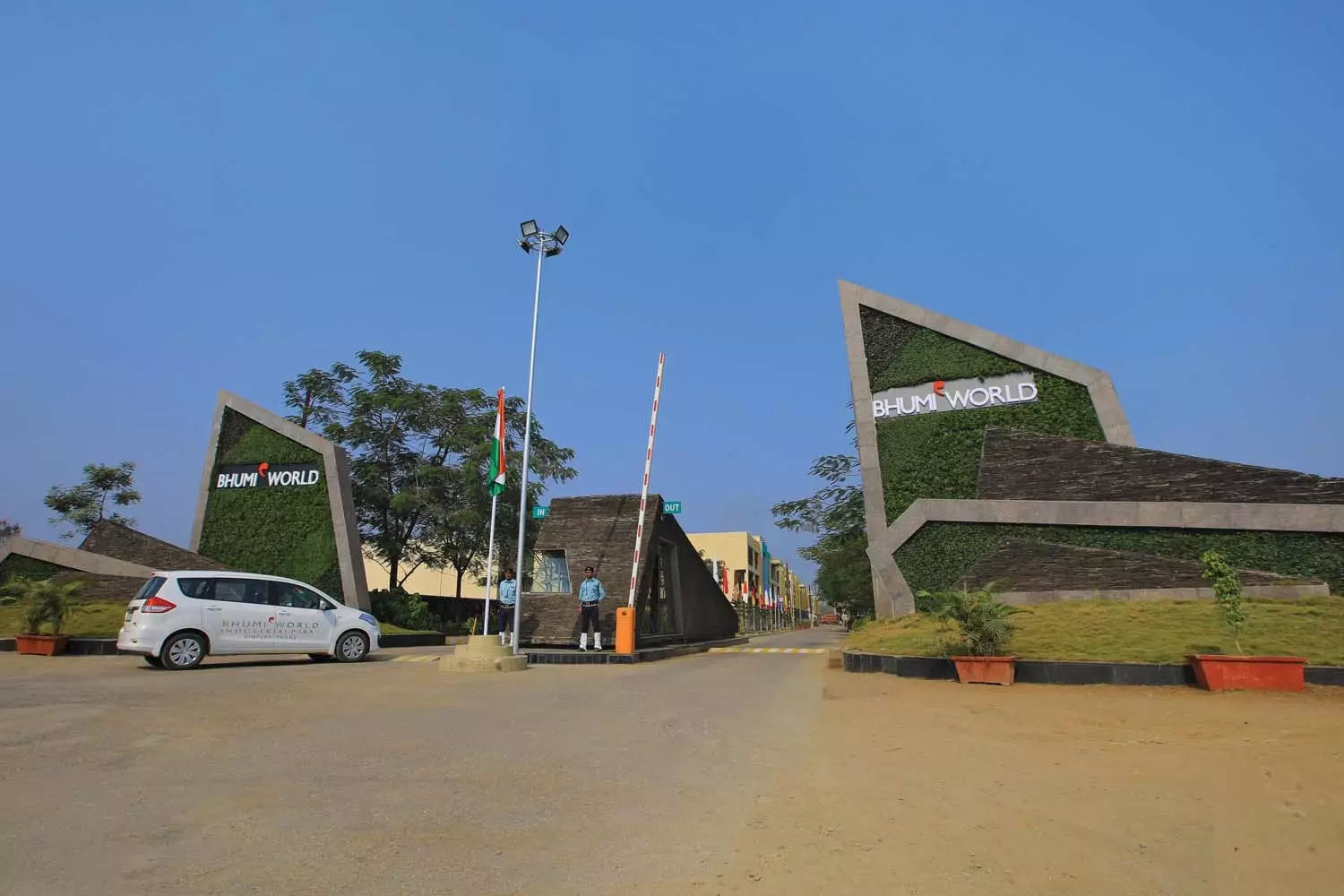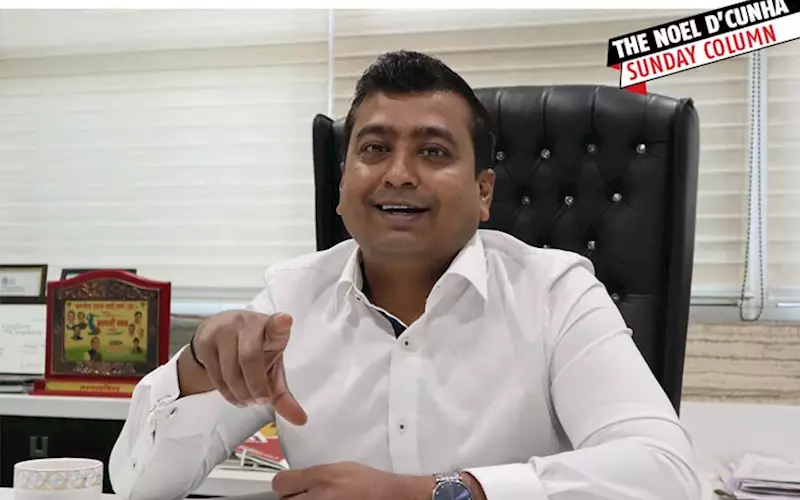Bhumi's world in Bhiwandi: Print. Publishing. Packaging – The Noel D'Cunha Sunday Column
In a capital intensive industry like printing, the focus of spending should be on the 3M’s – man, material and machinery, and not in real estate. The ratio should be 80:20.
In this Sunday Column, Prakash Patel highlights the benefits of Bhumi World
01 Sep 2019 | By Noel D'Cunha
Q: The last time we met, you had said, there are 700 operational units, with more than 100 from the international market. Of these 350 are print companies. Can you share an update?
A: At the moment there are 1,200 operational factories comprising both manufacturings as well as assembly units. Since the last year, we have added 50 more print companies, who have started their plants in Bhumi World.
Q: We have seen the packaging segment move into Bhumi World. Anything new that has been set up as far as packaging applications are concerned?
A: There’s a franchisee of Jack in the Box, which supplies toys for kids through Amazon.com. It’s a supplier of communication and educational tools for the kids, which is manufactured in different size and shapes. These products require innovative printing and packaging.
An interesting product is – balloons manufacturing. It’s used for small and big events like IPL. Those produced for IPL are expensive products.
Q: Why did the print companies move to Bhumi World?
A: If you see, the medium- and small-scale print companies in Mumbai’s industrial estate operate from small galas. There are print activities, which starts from paper buying to cutting and storage, to platemaking, printing, foiling and binding to packaging and delivery of the printed products. Many of these activities used to happen from different galas, sometimes on different floors or a neighbouring industrial estate altogether.
In Bhumi World, there are print and print-related service providers. All the above print process services can be done all under one roof or availed from within the industrial park.
Q: In short, an entire ecosystem is available in the form of 400 print companies?
A: In a way, yes. And it’s not just getting the different print processes in one industrial park, but also adding new customers to their portfolio.
Q: How?
A: Besides the 400 print-related companies, there are 700 other companies who need both print and packaging as part of their supply chain.
There are players from the engineering segment like automobile spares manufacturer, readymade garments, food industry, pharma industry, toys industry, as well as real and imitation jewellery who have set up plants in Bhumi World.
All these products need printing and packaging to reach the market. It is being made available within the industrial park.
Q: You said, there are garment-making companies. Can you share an example of Bhumi World’s ecosystem benefits?
A: There’s a company in Bhumi World named Souled Stores, which produces customised tee-shirts using a screen printing process. The orders are taken online and supplied within 48 hours. The company produces 3,000 customised T-shirts daily. During the IPL season, they produce customised jerseys for fans of different IPL teams.
Why I say that it’s an all-round industrial park is because Souled Stores needs plastic covers, labels as well as printed boxes to pack the T-shirts. So, these requirements of Souled Stores can be fulfilled within the Bhumi World industrial park.
Q: During our last visit you shared a number of services Bhumi World provides to its customers. What the update?
A: Normally, the industrial estate is built and handed over to the occupants. We have taken a different approach. We have linked production, employees, to sales to logistics. We had introduced a skill centre for training of personnel. We are planning to add print technology to our skill centre. For sales, we have eCommerce services, which helps our customers to list their products on online portals like Amazon and Flipkart?
We have introduced more bus services after a tie-up with Thane Municipal Corporation and Kalyan Dombivali Corporation. There’s a bus every 10 minutes for travel from a new bus stand built next to the project, to Thane station and back. The travel time is just 30 minutes. This includes a few AC buses too. Likewise, the Maharashtra State transport buses halt at our project’s bus stand to different destinations on this route.
On the railway connection front, the newest link to our project will be Panvel, Vasai and Bhiwandi. The rail line which exists runs close to our project. A new station, Pimplas, will be constructed within our premises in the next two-three years, for a train halt. This will make travel very easy and comfortable.
And lastly, a metro line from Thane to Bhiwandi has been planned. So, in the near future, anyone travelling from Colaba will reach our project in just 55 minutes.
Q: How will the rail connection help someone who is planning a move away from Mumbai to relocate to Bhumi World?
A: According to our survey, most of the employees working in printing companies in Mumbai and Navi Mumbai travel from places beyond Borivli- Dahisar. That’s because the housing in those areas is affordable, and many have moved there. For example, if an employee is travelling from Vasai or Nallasopara to Lower Parel or Navi Mumbai, the total travel time between the two places, will not be less than an hour-and-a-half. While on the other hand, the travel from Vasai or Nallasopara to Bhumi World (Pimplas) can be completed in 30 minutes.
Q: There were quite a few industrial estates in Mumbai?
A: Yes. According to our estimate, there are 350 industrial estates with 3.50-lakh industrial units operational in Mumbai. These units cause 40% of Mumbai’s traffic movement – be it people or tempo ferrying material and finished goods.
Decongesting Mumbai and making it a world-class or commercial city like Shanghai has been envisaged. But the government can plan a policy only if there are infrastructures on the outskirts of Mumbai, which can house these industrial units.
Bhumi World, situated in the Mumbai Metropolitan Region, is one such infrastructure which is available from a 500 sqft to one-lakh sqft.

Q: Which is the biggest print unit?
A: TM Prints, which manufactures playing cards, operates in a 50,000 sqft space. There’s a company Spectra Colour Tech, which produces shade cards for the paint manufacturers. The company operates from a 40,000 sqft space in Bhumi World.
Q: Proper workflow management is key to efficiency, isn’t it?
A: Yes. We have a team which can help design workflow for movement of material, incoming and outgoing. Our aim is to help increase production capacity by at least 50%.
Q: Can you share an example?
A: There’s a company called Toppler, which manufactures trousers. The company used to manufacture trousers in the traditional way for the last 40 years. The company now wanted to improve its production from 700 to 1,200 trousers per day. We gave them a team which researched and provided solutions which made the whole production lean. The company is now producing 1,200 trousers per day. Moreover, they are planning to up the production capacity to 2,000 without infrastructure expansion.
Q: How can the SMEs grow?
A: SMEs can grow by bringing in new technologies. That needs funds. There are two ways of getting funds. One is you borrow from the banks or from friends and families. Friends can give you only so much. That leaves you borrowing from financial institutions, who will charge interest.
Throughout the loan period, you end up paying interest from your profits. And with margins getting thinner by the day there is hardly any savings.
Q: How does one get the funds then?
A: By helping our customers become a public limited company under the BSE’s SME listing. Of course, this is for companies with an annual turnover of Rs 5-cr to Rs 30-cr. These companies can launch their shares in the Bombay Stock Exchange, where they can get interest-free money from the market for their expansions.
Entrepreneurs with higher goals can climb the ladder to reach the mainboard at the BSE.
Q: Setting up a print company requires regulatory clearances, solid roads to transport raw material and finished goods, appropriate ceiling heights to accommodate printing equipment, floor hardness to install the machines. How does Bhumi help?
A: We have proven track records by meeting the compliance for all segments of printing or security printing, by providing a dual entrance for each unit. We have internal concrete roads of six kms which is 40ft wide to support internal loading and unloading. Our typical unit sizes are 25x110 ft with floor to ceiling height options of 15ft and 32ft and this allows all kind of printing machines to fit with good floating space.
Q: Print companies today have to comply to regulations, more than ever before. Disposal and/or recycling of material used in print production become critical for a print establishment. How will moving to say, a Bhumi plot help?
A: It’s a very good question. In a cluster development scheme, it is very easy to maintain and dispose of waste. We have a maintenance team which takes care of the industrial disposal. We send it to the government recognised body, which disposes it in accordance with the rules.
Q: Operating in Mumbai’s galas vis-à-vis Bhumi World industrial park?
A: It’s a simple calculation. The rent is Rs 40,000 to 50,000 per sqft in Mumbai, whereas we are charging only Rs 2,000 to 3,500 per sqft. It’s cost-effective; almost 18-20 times less.
More importantly, I believe that a capital intensive industry like printing the focus of spending should be on the 3M’s – man, material and machinery, and not in real estate. The ratio should be 80:20. In Mumbai, it is exactly the opposite. Moreover, the industrial galas in Mumbai are not more than 1,000 sqft each, while here in Bhumi you can go as big as you want to.
Q: Bhumi World was established in 2008. You want everybody in your park to grow and expand. When will Bhumi World expand?
A: Bhumi World will expand. We are in discussion with the government on a scheme for industrial estates. We have proposed that each industrial ready unit should not be priced at more than Rs 2,500 per sqft. Bhumi World in collaboration with the government will build the industrial park and provide it to the end-user. We will deliver each unit in three months time.
We are hoping to set up industrial parks in five to six states of India.














 See All
See All